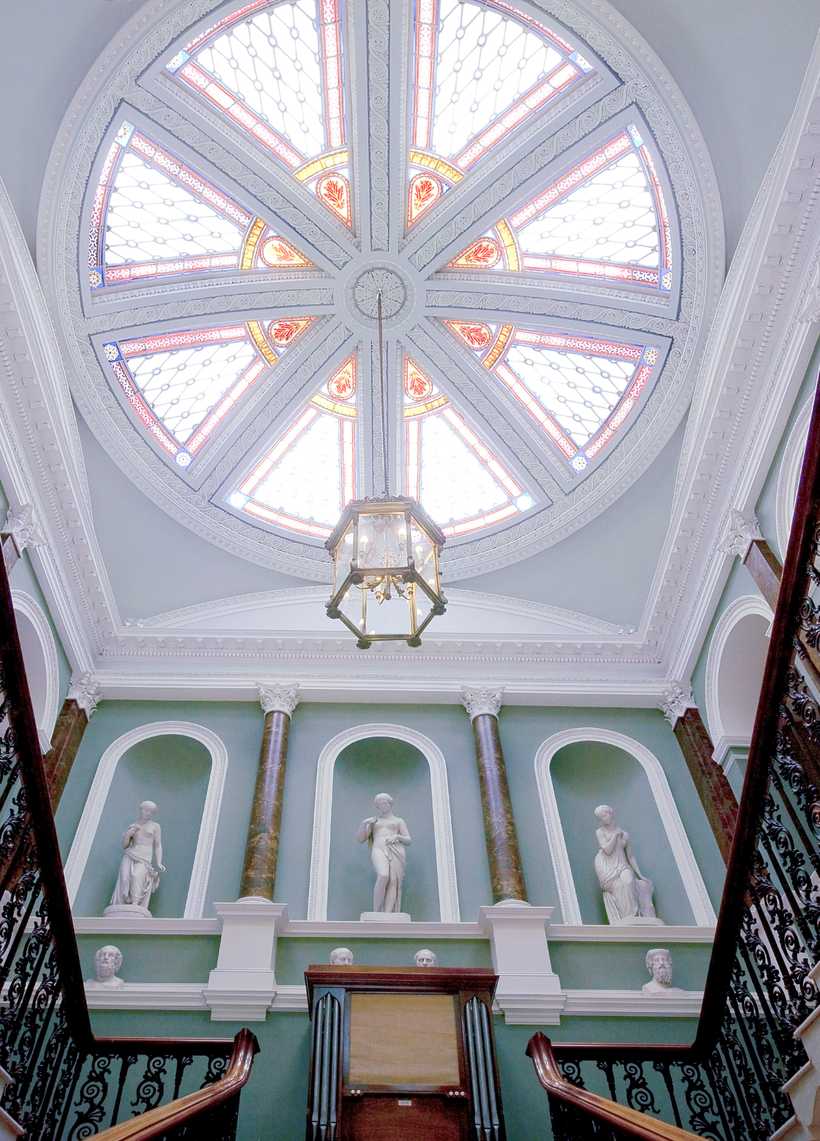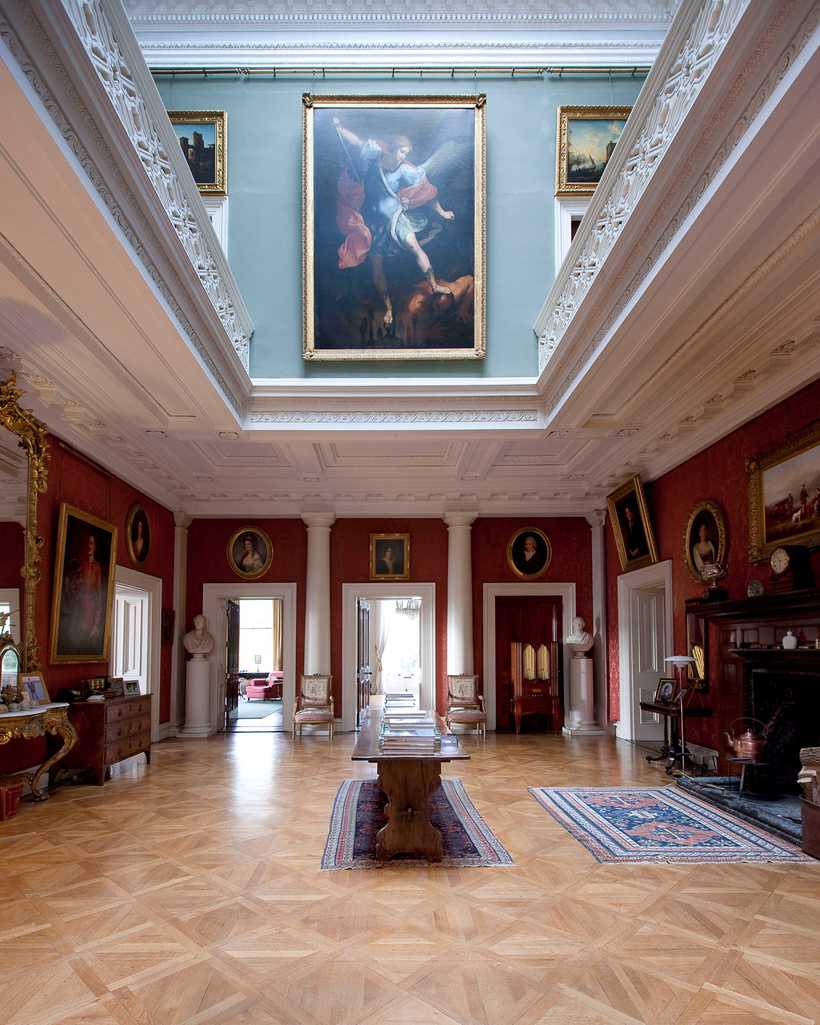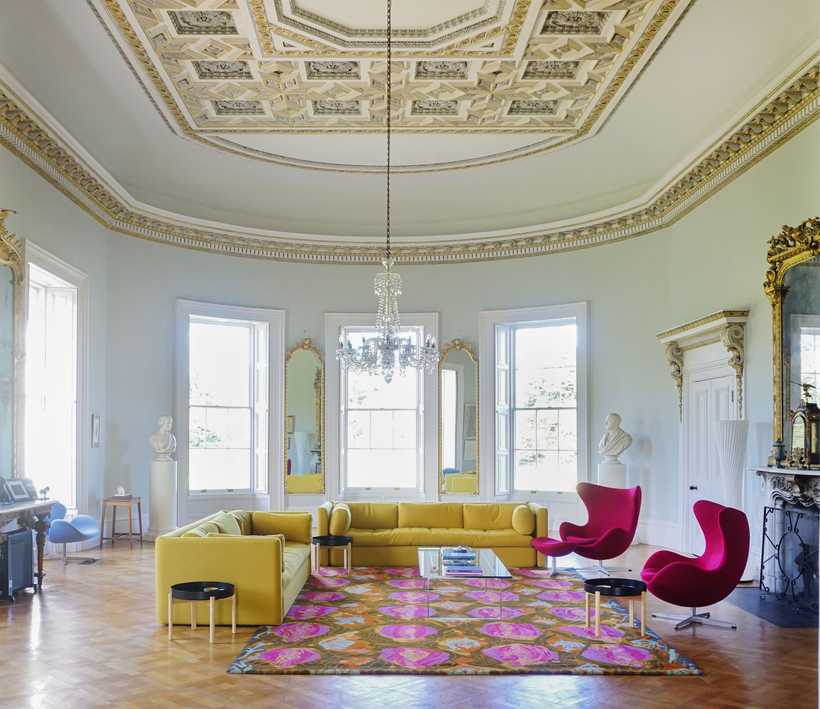
In 1846 Andrew Mulholland, great, great, great grandfather of the present owner, bought an 18th century two-storey over basement house, then called Springvale along with 270 acres of land of land for £23,500.
Ballywalter Park can be found some 20 miles from Belfast on the County Down coast, looking out over the Irish Sea to the coast of Scotland to the east and the Isle of Man to the south. In 1846 Andrew Mulholland, great, great, great grandfather of the present owner, bought an 18th century two-storey over basement house, then called Springvale along with 270 acres of land of land for £23,500. The Mulhollands, an Irish family, had made their fortune by owning cotton and then linen mills in Belfast. Andrew had also served as Lord Mayor of Belfast and felt that the existing house was not grand enough to reflect his perceived status. He brought in the well-known Irish architect Charles, later Sir Charles, Lanyon to come up with something rather grander.


Rather than demolish the existing house, Lanyon built around it, adding a single-storey south bow wing, housing the Library and the Drawing Room and a two-storey north bow wing to accommodate the Garden Room and the Round Bedroom above. He also added a new second floor, which provided accommodation for the children and a School Room. Lanyon then returned to add the magnificent domed Conservatory which Andrew’s son, John Mulholland, later the 1st Baron Dunleath, linked to the house with the Billiard Room. The house continued to be used to the full until the start of the Second World War, after which, like so many houses in the British Isles, it fell into a managed decline, with a lack of money to maintain it and ever fewer staff to serve it. The house was undoubtedly saved when Sir John Betjeman visited in 1961, when he extolled the quality of this Victorian Italian-style Palazzo improbably located in the Irish countryside.
This encouraged the current owner, Henry, the 4th Baron Dunleath, to embark on the long process of restoration. In this, they were hampered by an almost disastrous fire in 1973 and seemingly endless outbreaks of dry rot. By the early 1990s, almost all the major reception rooms had been restored and the kitchens had been moved up from the basement to the ground floor. Henry, however, died tragically young in 1993, bringing that phase of the restoration works to an end. Brian, the 6th Baron Dunleath, moved into the house in 1997 and he and his wife, Vibse, embarked on the next phase of restoration in 2000. At the time, there were only four bedrooms that were habitable and a distinct lack of bathrooms. The derelict top nursery floor was restored, new kitchens were installed, and the exterior of the house completely re-rendered and painted. Subsequent restoration works have included the Billiard & Smoking Rooms in 2004/5 and the Conservatory – a massive undertaking – in 2008/9. As a result of these major projects and others carried out when time and funds allowed, the house is now fully equipped for the 21st century.


The four bedrooms have now become twelve, two twins and eight doubles en-suite and the other two doubles each with their own private bathroom. Since 2021, the house has become carbon-neutral with electricity, heat and hot water all coming from the anaerobic digester over at the farm. In 2002, Brian and Vibse decided that Ballywalter Park should start to earn its keep and they began by getting approval from Tourism Northern Ireland and from the Food Standards Agency to provide both accommodation and lunches and dinners. To preserve the exclusive and special nature of the house and demesne, they restrict it to corporate use, such as residential conferences, product launches and photo shoots, top end groups staying whilst on visits to the Historic Houses of Ireland and as a film location. They do not provide facilities for private parties or for weddings. Over the years, they have welcomed British and Foreign Royalty, film and television stars and visitors from all corners of the globe.
Why not come and join them?
